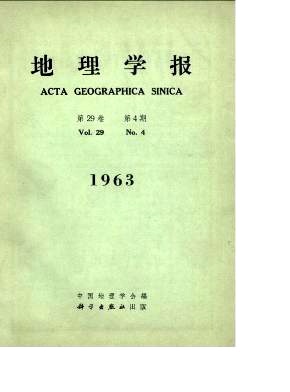KAI J.HSIA AND C.S.LEE
As a main tributary of the Yellow River, the Wei Ho flows eastward in a graben, Central Shensi. The river course below Sian takes NEE direction in accordance with the Tsingling structural line. The present paper deals primarily with the channel types, the characteristics of the channel shifting, and the processes of erosion and deposition of the Lower Wei Ho. The Lower Wei Ho displays free meandering pattern. There are more than 30 al-ternating bends below Wei-Nan, while anastomosing is prevalent through certain cross-ings in the neighbourhood of the junctions of the Wei Ho and its tributaries. The formation of the meandering channel of the Lower Wei Ho depends chiefly on the following physiographic conditions: (1) the hydraulic gradient of the Lower Wei Ho is rather gentle (0.1‰-0.2‰);(2) the sediments of the Lower Wei Ho alluvial plain are mainly sub-loess (medium or fine silt, or clay admixed with moderate amounts of silt);(3) the Yellow River during its rising stage exerts a backwater effect on the Lower Wei Ho; and (4) as the Yellow River north of Tung-Kwan shifted its course east-ward during the past three decades, the Wei Ho has extended its mouth more than 10 kilometers forward and its gradient has become gentler than before. Figure 3 (in the main text), showing the tendency of the channel shifting of the Lower Wei Ho during 1915-1962, exhibits some important aspects: first, most of the bends shift downstream vigorously due to the action of sweeping; secondly, the transverse shifting to the left bank is rather pronounced than to the right; and thirdly, the chute cut-offs were easily formed at the rising stage during the past years. After analyzing the geomorphic processes of the Lower Wei Ho, it can be concluded that the meandering tendency is still going on, and the channel filling will develop to a certain extent in the near future.
